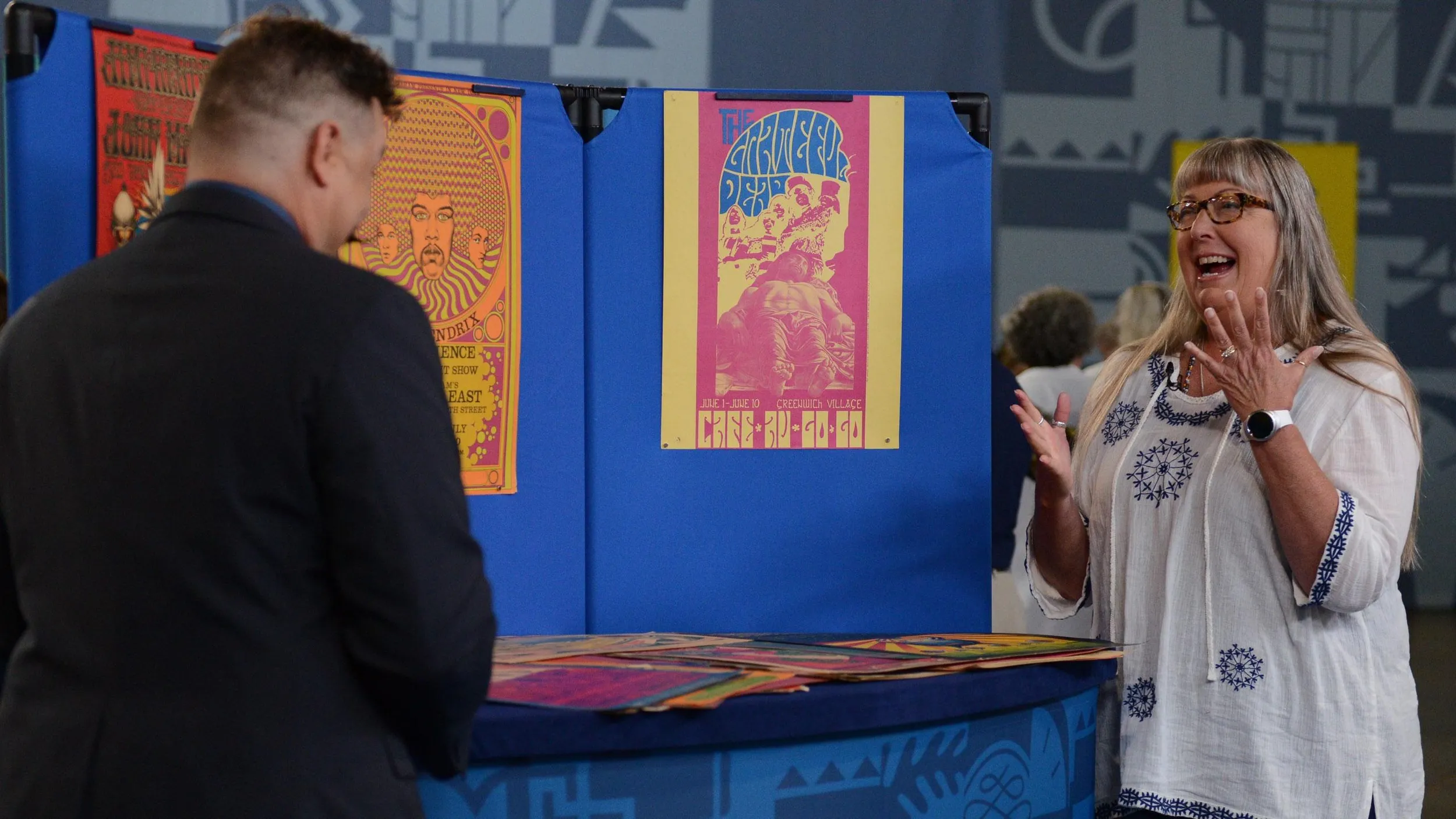GUEST: Well, I went to an antiques show in Dallas, and across the room, I hear, "I'm over here, Peggy." And there it was.
APPRAISER: So it talked to you.
GUEST: It talked to me, and it had a light under it on a stand and I thought it was the most beautiful vase I had ever seen.
APPRAISER: And did you buy it when you first saw it?
GUEST: No, they said it wasn't for sale.
APPRAISER: That's not nice!
GUEST: I told them, I said, "What's it here for?"
APPRAISER: So how did you get it?
GUEST: Well, I said, "If you ever decide to sell it, would you call me?" And I gave them my name and phone number. I first saw it in the '70s. They called me about it in '87, and they charged me $3,000.
APPRAISER: So they kept you waiting a long time.
GUEST: It was worth it.
APPRAISER: Do you know who made it?
GUEST: They said that it wasn't signed and that they didn't know anything.
APPRAISER: Right, and...?
GUEST: After I bought it, I found "Daum Nancy" written in gold printed on the bottom, but I'm not sure that's authentic.
APPRAISER: Okay, so you saw this signature on the bottom, the gilt signature. With the Daum signature, you always have the Cross of Lorraine as part of the signature. I will tell you that it is a Daum Nancy vase, and in this technique, the timeframe, it would have been made about 1900. The "Nancy" actually stands for the city in France. "Daum" is actually the Daum Brothers in the city of Nancy. In France, during the art nouveau period, the two biggest names were Emile Gall and Daum Nancy. The decoration on the vase is violets, which is very, very popular, but also what you have here that is really unusual is this engraved and gilded section on the bottom where you have grasshoppers and other designs, and this is actually taken from Egyptian decorations. Now, during this timeframe, there was Egyptian revival. They were redoing decorations that you found on Egyptian vases, Greek vases, Roman vases. In this case, they incorporated Egyptian motifs onto a French piece. So, basically, the piece is carved with acid. The flowers, then, are painted, they're enameled. The enamel is fired on. So same thing: this whole design here is carved with acid, and on the bottom, instead of painting it, they actually gilded it. It's a nice technique. You can see the carving to the stems, and that's actually the glass, and then it's painted and fired again. So you really can't wash it off when they fire it on. It's way up there, it's a couple thousand degrees. Do you have any idea what it's worth now?
GUEST: No, it's worth a lot to me because I love it, so...
APPRAISER: Well, besides being worth a lot to you, I would put a retail value probably in the $15,000 range.
GUEST: Great! That's great.










